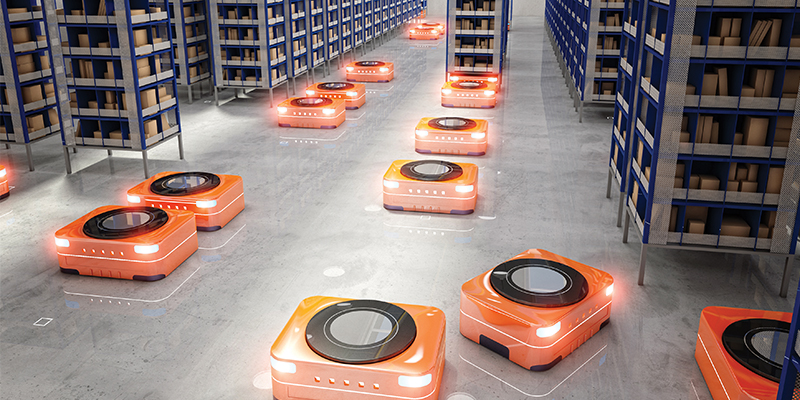From robotic picker systems within warehouses to fleets of autonomous delivery vehicles to artificial intelligence that generates extraordinarily precise strategies to manage supply chains and anticipate consumer demands, technology is transforming the warehouse/distribution sector. In a new report, “The Evolution of the Warehouse: Trends in Technology, Design, Development and Delivery,” published by the NAIOP Research Foundation, authors Steve Weikal and James Robert Scott from the MIT Real Estate Innovation Lab explore current and emerging technologies in the warehouse sector and how those technologies will impact commercial real estate companies.
Among all the technology advances, what is one that stands out to you as being particularly exciting and capable of transforming warehouse operations?
SW: Autonomous mobility. The headlines are usually around driverless cars. But we at the MIT Center for Real Estate think of autonomous real estate as including automated systems like robots that are zipping up and down the aisles, and indoor drones that fly around inside the warehouse and pick things off the shelves. There are driverless forklifts and pallet movers. Outside of the four walls, there is some autonomous activity in the yard. There are autonomous electric yard trucks that don’t go beyond the front gate but move things around in the yard, like getting containers to the right docks. There are drones that remain in the yard and monitor the outside of the building or they monitor and direct traffic around the yard. One person I interviewed described these kinds of automated warehouses as vending machines with roofs. They are not devoid of people, but they are so automated that the people operate around the edges.
What should CRE companies be thinking about putting into their next warehouse development or redevelopment to support emerging technologies?
JS: You have to look at the implementation of 5G technology and data infrastructure. You will also need to look at power supply and you may have to consider alternative energy sources. You could have incredibly power-hungry systems in your building that might allow you to pencil out putting solar on the roof. I know it’s easy for me to say that when, in reality, it’s quite costly to implement all that infrastructure. But implementing new systems within older environments is going to generate a huge amount of potential. There’s return on investment. You need to implement these systems to get the best value out of your locations.
How well suited are older buildings to supporting those more automated warehouse operations?
SW: We love to focus on the brand-new buildings, the ground-up construction that has all the latest bells and whistles. But the reality is that the large portion of the built environment in the world is existing. Technology will create the opportunity to retrofit buildings in such a way that will be increasingly powerful and profitable because the technology will enable more innovative, flexible ways of using space. And it will be in three dimensions as companies more efficiently use floor space, but also become more efficient at using the vertical axis as well.
One person I was talking to had a fascinating suggestion: He questioned if we should be writing leases on the basis of dollars per square foot or dollars per cubic foot because the technology now allows buildings to go taller in clear height and, in limited applications, go to multiple stories.
Then the next leap is perhaps basing leases on dollars per through-put. Some of the more sophisticated investors, developers and tenants are evaluating spaces in the built environment based on dollar per through-put. That explains an example in the report, why Amazon has a multilevel distribution facility on the outskirts of New Mexico, where land costs are minimal but the highway access is optimal. Why would they have built multistory which is very expensive to build compared to single story? The answer is they were calculating based on dollar per through-put. The efficiency was so much better on multiple levels than on a single one, which is why they built it that way.
It’s sometimes difficult to underwrite tech-enabled warehouse projects and renovations. It’s a very complex conversation. There is some tension between building four walls and a roof which is fairly straightforward, and you can underwrite that, versus all of these automated, very specific kinds of uses that may not be general purpose uses. The insides of a building are constantly changing because technology is always changing. So how do you tech-enable the building just enough to make sure that it is future proof, but not so much that it becomes obsolete too fast?
This is the second in a two-part interview with Steve Weikal, lecturer, researcher and CRE Tech lead, MIT Real Estate Innovation Lab, and James Robert Scott, lead researcher, MIT Real Estate Innovation Lab, authors of “The Evolution of the Warehouse: Trends in Technology, Design, Development and Delivery,” a report published by the NAIOP Research Foundation. Read part one: Consumer Trends Plus New Technologies Create Alternate Uses for Vacant Properties.














